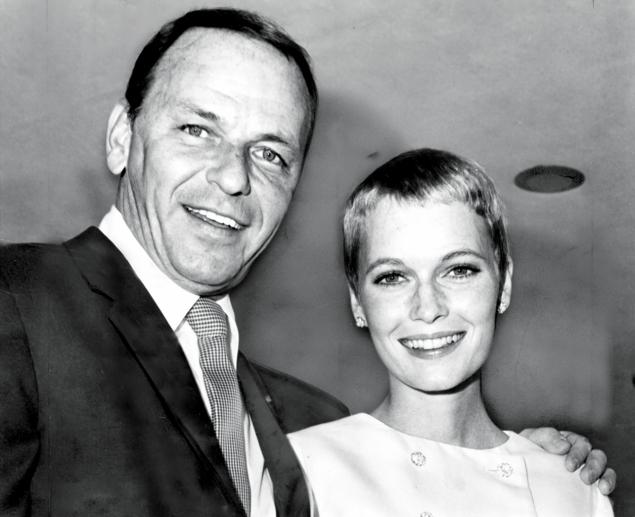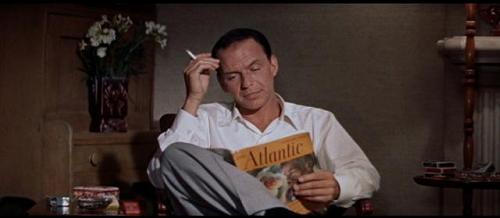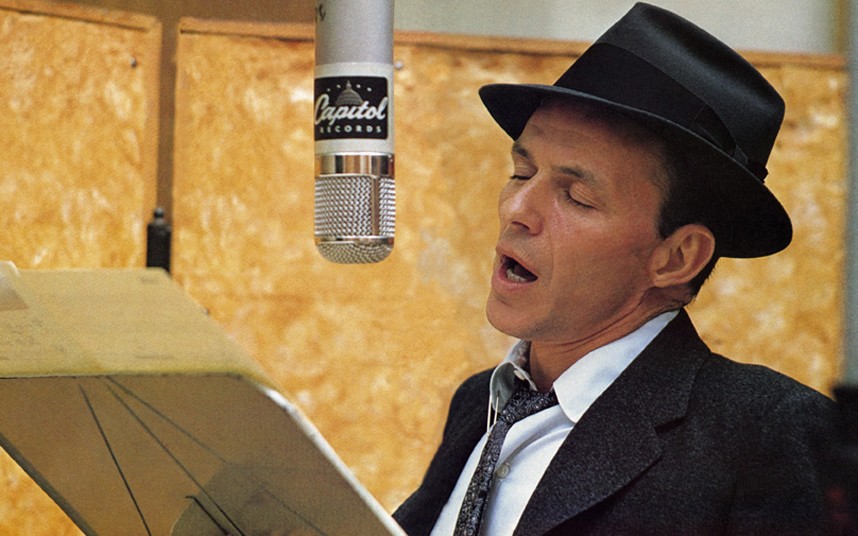Andrew Rostan was a film student before he realized that making comics was his horrible destiny, but he’s never shaken his love of cinema. Every two weeks, he’ll opine on current pictures or important movies from the past.
His mother spoke over fifty dialects of Italian and helped neighborhood girls with abortions. His father was a barkeep who boxed under the last name O’Brien because people thought only the Irish could fight. His voice teacher was a drunk ex-opera singer who lived over a restaurant in New York. He was friends with lawbreakers and Presidents. He was a teen idol who became an institution.
Charlton Heston said at a testimonial dinner that every one of his songs sounded like a four-minute movie. Frank Sinatra, who celebrates his centennial this year (and died seventeen years ago today), had a past that fueled a lifetime of stories.
THE LIFE
Ol’ Blue Eyes’s history is retold in Oscar-winner Alex (Taxi to the Dark Side, Going Clear) Gibney’s new film for HBO, Sinatra: All Or Nothing At All. The film is four hours long but feels much shorter, mainly because much of the duration is set to that magnificent voice.
Gibney keeps it from being a standard biographical documentary with a clever framing device, structuring the film around eleven songs Sinatra performed at his 1971 “retirement” concert in Los Angeles. There is handheld film of the show, and the shadowy stage, dramatic lighting, and grainy Coppola/Friedkin quality all heighten the footage’s impact: Sinatra, 56 but still snarling with energy, gives what he thought would be his final songs all he has.
The rest of the movie is well done, with plenty of vintage photographs, film clips, and performances by Sinatra throughout his life, accompanied by Shelby Foote-style commentary by Terry Teachout and Pete Hamill, who help paint an evocative picture for the audience of the times Sinatra grew up in and how they shaped his life.
Gibney doesn’t have a central theme for All Or Nothing At All but he doesn’t necessarily need one: his point is that Sinatra, determined to grasp as much of life as possible after a scrappling childhood, was a man of intense contradictions, each of which is thoroughly displayed. Sinatra was…
 -a dedicated womanizer and socially aloof man who still tried to be a good father, even when he married a woman his children’s age (and shots of him and Mia Farrow as a couple are…bizarre).
-a dedicated womanizer and socially aloof man who still tried to be a good father, even when he married a woman his children’s age (and shots of him and Mia Farrow as a couple are…bizarre).
-a serious artist who recorded novelty duets with Dagmar and late 1960s pop drivel that never suited his voice.
-a man who deplored crime but punched out reporters, befriended mobsters because he loved the feeling of power…and helped Sam Giancana secure a presidential election for John F. Kennedy.
-and a man who ultimately supported Ronald Reagan and became staunchly right-wing, but also idolized Kennedy and, to an extent I was never fully aware of, dedicated his life to fighting racism. Sinatra never turned down a chance to perform for socially progressive causes, and in 1962, at the height of his fame, he spent his own money on a world tour in support of underprivileged children. That same year he sang with Lena Horne at a Carnegie Hall benefit and moved Martin Luther King to tears with his “Ol’ Man River.”
All of this is wonderful, but the best part of Gibney’s film for me is a short sequence in the middle on Sinatra’s years at Capitol Records, with clips and photos of him in the studio with the great arranger Nelson Riddle. In suit and fedora, his arms gesturing, blue eyes twinkling, he looks and moves like the greatest actor on earth, clearly throwing himself into the music. Even the still images bring up a sense of some remarkable artistic intuition and charisma that very few other people besides Frank Sinatra have ever possessed.
THE MOVIES
 I want to recommend some of the great art this film discusses, beginning with the movies. The place to begin watching Sinatra on screen is 1953’s Best Picture winner From Here to Eternity, for which he won his own Oscar. The story of the US military in Hawaii right before Pearl Harbor is truly great, and Sinatra excels, striking a cocksure but vulnerable middle ground between his male co-stars Burt Lancaster and Montgomery Clift; screenwriter Daniel Taradash said of his audition “He looked like a plucked chicken. The characterization was all there.” The Man With the Golden Arm and The Manchurian Candidate are equal must-sees, but a lesser-known but really mesmerizing film in which Sinatra had top billing is Some Came Running from 1958. Directed in gorgeous Cinemascope by Vincente Minnelli, Some Came Running (pictured above) features Sinatra as a World War II veteran who comes home after his discharge and tries to find his way as a writer in a world full of shady figures, respectable people with dark secrets, and a woman so genuine he’s afraid of her. It’s a serious film about the drama of ordinary existence, which is just as weighty as battles and assassination attempts.
I want to recommend some of the great art this film discusses, beginning with the movies. The place to begin watching Sinatra on screen is 1953’s Best Picture winner From Here to Eternity, for which he won his own Oscar. The story of the US military in Hawaii right before Pearl Harbor is truly great, and Sinatra excels, striking a cocksure but vulnerable middle ground between his male co-stars Burt Lancaster and Montgomery Clift; screenwriter Daniel Taradash said of his audition “He looked like a plucked chicken. The characterization was all there.” The Man With the Golden Arm and The Manchurian Candidate are equal must-sees, but a lesser-known but really mesmerizing film in which Sinatra had top billing is Some Came Running from 1958. Directed in gorgeous Cinemascope by Vincente Minnelli, Some Came Running (pictured above) features Sinatra as a World War II veteran who comes home after his discharge and tries to find his way as a writer in a world full of shady figures, respectable people with dark secrets, and a woman so genuine he’s afraid of her. It’s a serious film about the drama of ordinary existence, which is just as weighty as battles and assassination attempts.
THE MUSIC
But they called Sinatra the Chairman of the Board for his skill with a microphone, not on camera. These are my six favorite Sinatra albums, and all of them deserve a place in your record collection.
Songs For Swingin’ Lovers! (1956): Considered by many to be Sinatra’s masterpiece, this 1956 collaboration with Nelson Riddle is full of exuberant music, unique arrangements, and superb vocalizing, especially on one of the two apotheoses of Sinatra’s career: the four-minute crescendo to a joyful finale that is “I’ve Got You Under My Skin.”
A Swingin’ Affair (1957): An overlooked gem long in the shadow of Lovers, Sinatra creates a program full of standards less familiar to modern audiences but sung with perhaps more ease and feeling than its predecessor.
Only the Lonely (1958): The other side of Sinatra was the broken-hearted saloon singer, a term he often used to describe himself in concert. With Riddle arranging a band heavier on strings than horns, Sinatra records a break-up album as perfect as Blood on the Tracks and Sea Change, ending with what I consider the other track that defines all you need to know about the man, the sparse but towering “One For My Baby (And One More For the Road).”
September of My Years (1965): Almost all of Sinatra’s studio albums had a concept running through them. This one, recorded when he turned 50, is about growing older and looking back on life’s successes and failures. Today such a record might get no attention, but back then it won Album of the Year at the Grammys. Backed by Gordon Jenkins’s intricate orchestra, this is an unusual but rewarding listen with two of my favorite Sinatra recordings: “Hello, Young Lovers” and the perennial “It Was a Very Good Year.”
Trilogy (1979): Sinatra’s most ambitious album is a triple-decker. The first disc was his first recording of old standards since 1963, and it finds him reveling in the Great American Songbook backed by Billy May’s brash arrangements. The second is a hit-or-miss run through more modern songs. Some of it’s embarrassing, but “New York, New York” and “You and Me (We Wanted it All)” are glorious. The third is a forty minute-long song about space travel and death written by Jenkins, which is amazingly weird but strangely moving.
Sinatra on Reprise: The Very Good Years (1960-1979): Out of print but worth searching for, this compiles two decades of music, culminating in “New York, New York,” and mixing his biggest hit singles (“Strangers in the Night,” “My Way”) with some of his most memorable recordings of all (“Luck Be a Lady,” a live “Under my Skin” with Count Basie and Quincy Jones, “Send in the Clowns”). It sums up everything Frank Sinatra was about. Essential.
Pictures from Hilobrow.com, New York Daily News, and London Telegraph





